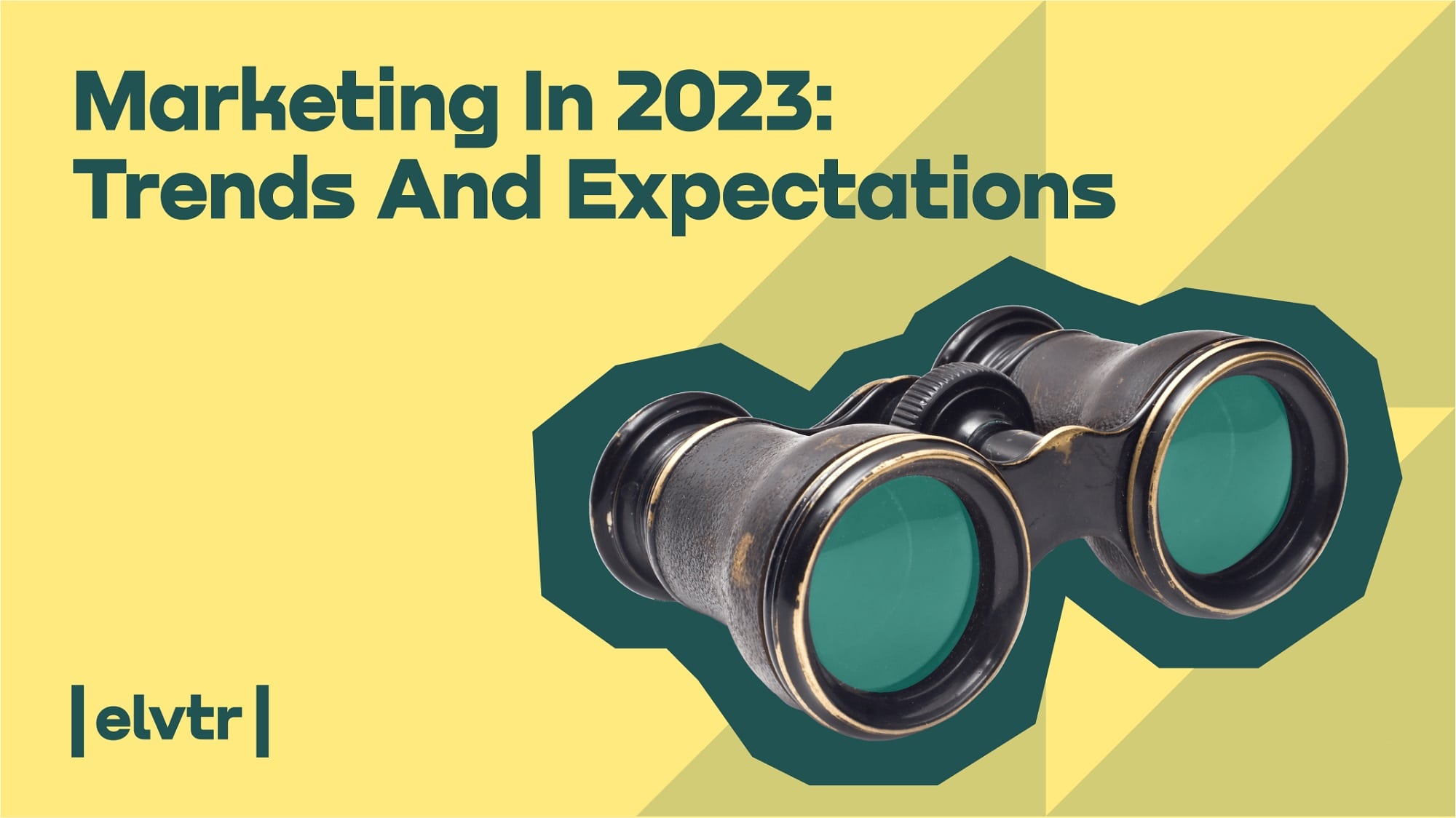- MAIN PAGE
- – elvtr magazine – META’S ALBERT CHAN ON HOW TO BUILD SALES-MARKETING SYNERGIES AND INCREASE REVENUE
META’S ALBERT CHAN ON HOW TO BUILD SALES-MARKETING SYNERGIES AND INCREASE REVENUE

From his unique vantage point as Director and Head of Sales at Small Business Group – North America, Meta, Albert Chan is one of the world’s most knowledgeable experts on digital salesmanship. Having held leadership roles at companies such as P&G, Google, and now Meta, Albert has worked with over 100,000 clients such as Amazon, Walmart and eBay. As a Harvard Business School alumnus with over 20 years of sales and marketing experience, he has mastered the art of empowering diverse teams to set and achieve goals through a data-driven approach.
In the following interview, Albert shares his thoughts on how marketing and sales can set common goals despite using different metrics, what the pandemic has taught us about communication, and how you can lead through change by empowering your team.
Tell us one thing that sales folks should know about marketing people.
Sales should recognise that the marketing people possess a deep understanding of the company's target audience. They invest their time in identifying the customer's needs and behaviours. So these people are crafting strategic messages that resonate with the market.
By leveraging this valuable information, sales teams can fine-tune their approach and tailor their communication to prospective clients. In essence, marketing provides a roadmap that guides sales to navigate the customer journey
And something marketing people should know about sales folks?
Marketers should recognise that the sales folks are the frontline people that interact with customers daily. They know customers the best. They possess a wealth of real-time market insights, customer objections and emerging trends. So marketing people can benefit from collaborating with the sales team to refine their strategies, campaigns and content.
Marketing should also recognise that sales is the revenue driver of the organisation. They have intense scrutiny and pressure to deliver revenue and achieve quotas. So marketers should be empathetic with that challenge.
They should know that both teams aim to achieve a common goal: continue to drive customer satisfaction and increase revenue.
Sales and marketing use different metrics. Is that a problem when trying to set common goals and how do you overcome it?
One way is to focus on the customer journey. Both sales and marketing play a vital role in this customer journey from awareness to conversion.
So it's important to identify the key touch points and metrics that reflect the performance of both teams, such as leads, conversion rates, customer lifetime value, customer satisfaction scores – these are some examples.
YOU WOULD LIKE THIS ARTICLE:

Marketing In 2023: Trends And Expectations
Discussing what is shaping the marketing world this year.
When it comes to KPIs like revenue growth, customer acquisition costs, customer conversion rates, there's a framework called “customer acquisition framework” that demonstrates where these marketing and sales metrics tie to where the customer is in that funnel.
Aligning on definitions is also key: ensuring that both teams can agree on shared definitions of key metrics, such as marketing qualified leads (MQL’s) and sales qualified leads (SQL’s). This alignment helps avoid confusion and ensures that both teams are working towards the same targets.
Finally, it’s also about recognising and celebrating the joint achievement of both teams. That is key to enforce the importance of this collaboration and the strengthening of commitment to shared objectives.
What do companies lose when they don’t get this crucial Sale-Marketing synergy right?
There are a few negative consequences. Number one is inefficient lead management. Without proper alignment, leads may not be nurtured effectively, causing potential customers and prospects to slip through the cracks.
The other one is wasted resources. When sales and marketing are not on the same page, you have misallocation, duplication and misdirection. This also increases costs and decreases in ROI on campaigns and initiatives.
Finally, there is inconsistent messaging. If both teams are not in sync, there's disjointed and confusing communication, both internally and externally. The consumers will receive confusing messaging which will ultimately erode trust and brand perception.
And what do they gain if they do get it right?
On the flipside, if they get it all right in terms of management, resourcing, messaging, all of these elements will be more streamlined, optimised and cohesive.
Bringing these teams together improves morale and teamwork. If they are aligned, they foster a better culture of cooperation, mutual support, productivity and creativity.
Finally, that brings accelerated growth and profitability. A harmonious relationship between these teams fuels the company's ability to have more synergies, attract new customers and retain existing ones, and drives revenue. This alignment sets the stage for long-term success and a competitive edge in the market.
A key element of this fragile sales-marketing relationship is communication, both formal and informal. What's best practice in this case?
There is a mixture of both formal and informal collaboration. One way to do this is by fostering that culture of collaboration. For example, inviting the team members to participate in cross functional projects.
When I was at Procter and Gamble, the marketing function would invite sales to our agency calls, global planning sessions, etc. So sales could understand what we did but also provide input and tell us what our customers say. Basically answer questions such as “if we were to launch this, how would the client and consumer react?”
And then vice versa. So where I'm at now {Meta}, we're working with our advertisers directly. We bring in our marketing folks so that they can provide a bit of perspective. For example, here’s a 360 launch plan and communication campaign that we want to go to the market with, but we have to ensure that all the points of contact are lined up and consistent.
Fostering that collaboration and inviting the other team to each individual's functional meetings, projects and brainstorming sessions is key.
Following the pandemic, many people work remotely, sometimes in different time zones. How do you set common goals and a shared vision remotely?
That adds another layer of complexity. But I think a lot of the principles are still intact.
I'm a strong believer in collaborating on the vision, instead of telling the team “this is who we are and and how we're going to operate”. It's important to involve the team in the process of defining that shared vision. Seeking their input helps ensure they buy into it and there is a sense of ownership. So team members have to foster this collaborative unified vision.
Another way is setting clear expectations. It's important to define goals, responsibilities, expectations and guardrails for each team member, so that they know how to operate within certain boundaries where they can have a more free rein.
I am also a believer in a culture of recognition. You have to create opportunities to do that:, celebrate the team but also individual successes. That boosts morale and reinforces the collaboration mentality. All of these things are really crucial to building a team culture.
Finally, as a manager you have to be empathetic. Even though we're all in the same “storm”, we are all in different “boats”. So we need to understand that remote work can present unique challenges for each and every one of us. We have to be empathetic to one another's personal situation.
YOU WOULD LIKE THIS ARTICLE:

Four Office Etiquette Rules That No Longer Work
A guide for those who want to take the team back to offline office.
Are you a big believer in the value of physical meetings?
When I was in business school, one of my professors, Tsedal Neeley, had talked about her research on physical versus remote meetings. The gist was that you can still be very effective even when you aren't in the same room. And research shows that hybrid models are the most effective for employee output and work satisfaction.
But there are times when being physically in the same place is important, especially when it comes to collaboration and culture-building. We need to think of offices as tools as we would any digital tools that will enable us to do remote work. And if we think of offices as tools, we think of them as tools for collaboration and innovation purposes.
Regarding culture building, if there are opportunities to build it in person, that definitely goes a long way, especially since we've been lacking it over the past few years. But for things like updates, all-hands and FYI meetings can be just as effective remotely.
Is there a firm that showcases what a great sales-marketing collaboration can do?
One I want to highlight is Hubspot, a leading provider of inbound marketing, sales and CRM. What I admire about them is how they've been able to communicate and align on shared goals and KPIs.
Their sales and marketing teams have a common understanding of their objectives and how they work together to achieve them. They establish and share KPIs at the manager level, which then get deployed. And it's tracked to ensure that both teams are accountable for their role in driving revenue growth. That's how they do the alignment of goals.
A few things empower them to do that. Number one is that they have integrated technology. They have developed their own suite of sales and marketing tools that enables a seamless collaboration of both departments. Their CRM, marketing, automation, sales enablement tools are integrated, providing both teams visibility and the ability to use a unified platform for managing leads, campaigns, and customer interactions.
And then they have a content-driven strategy. The HubSpot inbound marketing approach relies on creating high-quality, valuable content to attract potential customers. So their marketing team collaborates closely with their sales team to develop that content to address customer pain points, support the sales process, and helps move leads through the funnel.
It’s similar to what we did at Procter and Gamble and even Meta now. We partner very closely, so that we can both understand what the customers' pain points are. And also understand strategic brand initiatives and messaging we want to deliver on the marketing side.
Can you tell us a bit more about how you do this at Meta?
It is very similar to what some of the other successful companies do. We align on Objectives and Key Results (OKRs). It’s a goal setting framework that helps teams align their efforts with the organisation's strategic objectives.
The objectives are qualitative statements that ‘tells what you want to improve’. The key results are quantitative, measurable outcomes that ‘show how close you are to achievement.’.
The success of the objective is measured by progress made on key results.
How to deliver changes and what does “leading through change” mean?
Leading through change is about how we can be catalysts for change as leaders. In other words, how we can make critics become champions of change.
The number one component here is understanding that things will definitely get worse before it gets better. As a leader, how do you close that gap and make it faster?
One thing is setting clear expectations with the team. Clarifying expectations and timelines, so that you can mitigate resistance. You have to ensure that the team members understand what their roles are to deliver change. And then communicating that change and the expected outcomes.
Constant and regular communication is key. So you need to be transparent in communication while deploying change. They want to know what’s changing for them, why, and what will it look like afterwards?
For example, now with the banking crisis and the layoffs, it’s very important for us to provide transparency and regular communication. And also provide support and resources to help manage the stress and anxiety, because change can be taxing.
*ELVTR is disrupting education by putting proven industry leaders in a virtual classroom with eager rising stars. ELVTR courses offer 100% instructor driven content designed to give you practical knowledge within a convenient time frame. Choose the right course for you!


